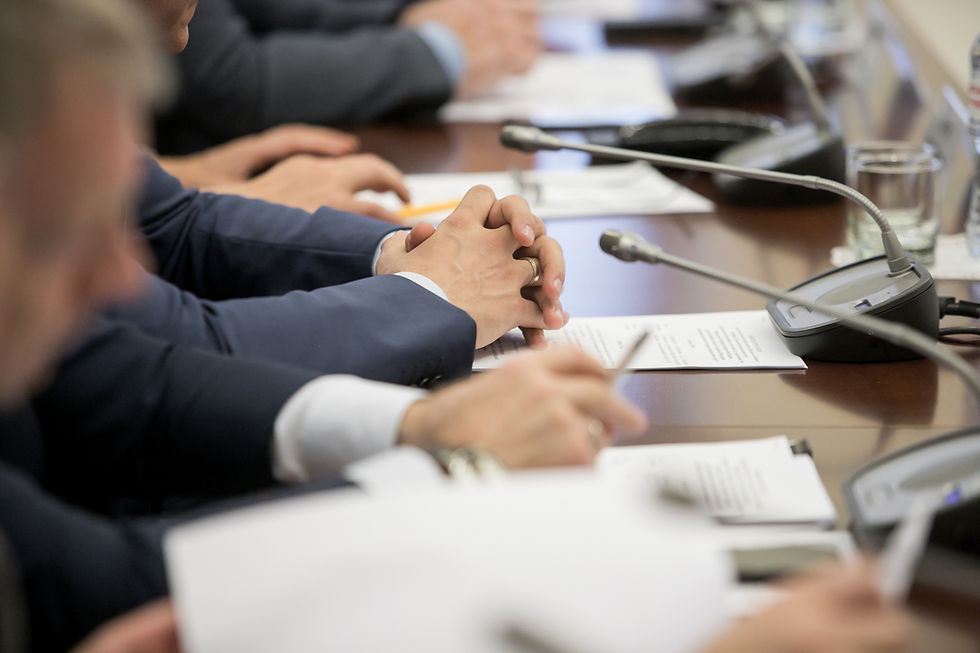Single-use Plastics Impacting the Great Lakes
- Seaside IT
- Jan 27, 2023
- 3 min read

Photo courtesy of Unsplash
Single-use plastics, or SUPs, are detrimental to the environment; they can be utilized only once and are more likely to end up in bodies of water. These plastics include grocery bags, plastic cutlery, styrofoam, and straws, and they can end up in any body of water. Single-use plastics affect not only our oceans but our lakes, rivers, and streams. Over time, these plastics break up into microplastics– they never disappear. Once they accumulate in the water, they can cause significant damage to the environment. While these plastics are notably convenient on a short-term basis, sustainability is often heavily sacrificed when focusing on long-term impacts.
Michigan’s Great Lakes, which provide water for over 40 million people, have begun to notice a substantial presence of plastic. Microplastics have been showing up in local drinking water and causing health issues for the local wildlife. Plastic ingestion can lead to intestinal blockage, starvation, and internal injuries. According to the Rochester Institute of Technology, an estimated 22 million pounds of plastic enter these lakes annually. Plastic discarded into lakes does not have much room to travel either: this causes extremely concentrated aggregation. After ending up in the lakes, the microplastics can absorb toxic chemicals. These surface plastics are consumed by wildlife, entering the food chain. Plastic, which is designed for durability, eventually becomes a part of their ecosystem. Researchers have also found that these plastics can absorb specific chemicals toxic to many of the lakes’ inhabitants. The University of Toronto collected research on the impact of microplastics on a particular species– the fathead minnow. Their discoveries show that larval fathead minnows exposed to microplastics from Lake Ontario developed around six times more malformations than those exposed to pre-consumer microplastics.
Matthew Hoffman, with RIT’S School of Mathematical Sciences, conducted a study following the volume of plastic debris surrounding the Great Lakes area. Unlike garbage patches in the ocean, the plastic pollution in these lakes was found to wash up on the shorelines of other states due to their relentless wind and lake currents. Eventually, the plastic debris flows out to the ocean, and this local issue accentuates the global plastic problem.
While there is no standard plastic regulation nationally, each state and city handles this issue differently. The U.S., which leads as one of the world’s largest polluters, has yet to develop an effective ban on single-use plastics on a federal level. Individually, recycling and reducing plastic can be locally advantageous. The Illinois-Indiana Sea Grant, in partnership with NOAA Sea Grant and the NOAA Marine Debris Program, has started to lead the development of marine debris prevention and local campaigns.
Chicago Shedd Aquarium’s senior director of conservation policy and advocacy, Andrea Densham, urges the need to reduce plastic use, “We do not have a choice now,” Densham says. “Nothing we use for a few minutes should be allowed to pollute our waterways and impact the health and wellbeing of humans and wildlife for centuries.” We must be more mindful of how, when, and what we recycle. The more plastic that becomes recycled, the less garbage there is that ends up in landfills and incinerators. Subsequently, less plastic pollution will be present in our oceans and local bodies of water—this would aid in generating cleaner drinking water and a greener environment
References
Advocates introduce chicago city ordinance to combat plastic pollution. Illinois Environmental Council. (2020, January 16). Retrieved January 13, 2023, from https://ilenviro.org/advocates-introduce-chicago-city-ordinance-to-combat-plastic-pollution/
Frequently asked questions: Benefits of recycling. Frequently Asked Questions: Benefits of Recycling | Land, Buildings & Real Estate. (n.d.). Retrieved January 14, 2023, from https://lbre.stanford.edu/pssistanford-recycling/frequently-asked-questions/frequently-asked-questions-benefits-recycling
Great Lakes Plastic Pollution. Alliance for the Great Lakes. (2022, November 3). Retrieved January 11, 2023, from https://greatlakes.org/great-lakes-plastic-pollution-fighting-for-plastic-free-water/
Michigan Radio | By. (2021, October 10). Chemical impact: Microplastic pollution more complex than we think, says New Research. Michigan Radio. Retrieved January 20, 2023, from https://www.michiganradio.org/environment-science/2021-05-04/chemical-impact-microplastic-pollution-more-complex-than-we-think-says-new-research
Neil.mccoy. (2022, February 2). Preventing plastic marine debris in the Great Lakes. OR&R's Marine Debris Program. Retrieved January 20, 2023, from https://marinedebris.noaa.gov/prevention/preventing-plastic-marine-debris-great-lakes
Ocean plastics pollution. Ocean Plastics Pollution. (n.d.). Retrieved January 20, 2023, from https://www.biologicaldiversity.org/campaigns/ocean_plastics/
Seo, H. (2022, December 7). The US falls behind most of the world in plastic pollution legislation. EHN. Retrieved January 27, 2023, from https://www.ehn.org/plastic-pollution-2655191194.html
The Plastic Pollution Problem. GLPC. (n.d.). Retrieved January 10, 2023, from https://www.greatlakesplasticcleanup.org/the-plastic-pollution-problem
Researchers study plastic pollution in Great Lakes. RIT. (2016, December 16). Retrieved January 12, 2023, from https://www.rit.edu/news/researchers-study-plastic-pollution-great-lakes



